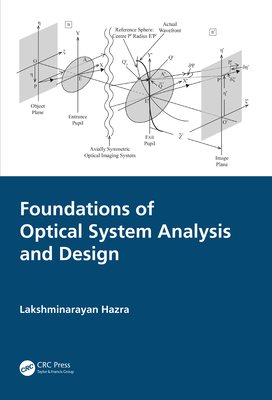商品描述
Freeform lens design has numerous applications in imaging, aerospace, and biomedicine. Due to recent technological advancements in precision cutting and grinding, the manufacturing of freeform optical lenses with very high precision is now possible. However, there is still a significant lack of mathematical literature on the subject, and essentially none related to liquid crystals. Liquid crystals are appealing for use in imaging due to their flexibility and unique electro-optical properties. This book seeks to fill a gap in mathematical literature and attract focus to liquid crystals for freeform lens design.
In particular, this book provides a rigorous mathematical perspective on liquid crystal optics with a focus on ray tracing in the geometric optics regime. A mathematical foundation, especially involving variational methods, is set in order to study lens design and ray tracing problems in liquid crystals. As an application, a lens design problem is posed and solved for the case of a simple director field.
Another imaging topic addressed in this book is absolute instruments. Absolute instruments are devices which image stigmatically, i.e. without any optical aberrations. These instruments cannot be designed through transformation optics, and until recently, only a handful of examples were known. Mathematically, this is a largely untapped area of research, yet the applications are profound. In particular, this book illustrates the mathematical challenges of obtaining absolute instruments in the context of liquid crystals. As such we also propose a weakening of the notion of absolute instrument to allow for a wider class of devices to image "almost" stigmatically. Along the way, we make connections between lens design problems and some perhaps unexpected areas of mathematics, including nonlinear partial differential equations, Riemannian geometry, and dynamical systems.
Finally, the book describes a number of open directions (of which there are many), revealing the richness of this area which lies at the interface of geometric optics and variational methods for liquid crystals. The target audience is mathematicians with a background in analysis or differential equations, but not necessarily electromagnetism or geometric optics. Additionally, mathematics students interested in expanding beyond "classical" variational problems in liquid crystals will be interested in the plethora of new research directions.
商品描述(中文翻譯)
自由形透鏡設計在成像、航空航天和生物醫學等領域有著眾多應用。由於最近在精密切割和磨削技術上的進步,現在可以製造出具有非常高精度的自由形光學透鏡。然而,關於這一主題的數學文獻仍然相當缺乏,尤其是與液晶相關的文獻幾乎不存在。液晶因其靈活性和獨特的電光特性而在成像中具有吸引力。本書旨在填補數學文獻的空白,並將注意力引向液晶在自由形透鏡設計中的應用。
特別是,本書提供了液晶光學的嚴謹數學視角,重點在於幾何光學範疇中的光線追蹤。建立了一個數學基礎,特別是涉及變分方法,以研究液晶中的透鏡設計和光線追蹤問題。作為應用,提出並解決了一個簡單導向場的透鏡設計問題。
本書還探討了另一個成像主題,即絕對儀器。絕對儀器是以無光學像差的方式成像的設備。這些儀器無法通過變換光學設計,直到最近,僅有少數幾個例子被知曉。在數學上,這是一個尚未充分開發的研究領域,但其應用卻是深遠的。特別是,本書闡述了在液晶背景下獲得絕對儀器的數學挑戰。因此,我們還提出了一種對絕對儀器概念的弱化,以允許更廣泛的設備類別以「幾乎」無像差的方式成像。在此過程中,我們將透鏡設計問題與一些或許意想不到的數學領域建立了聯繫,包括非線性偏微分方程、黎曼幾何和動態系統。
最後,本書描述了許多開放的研究方向,揭示了這一領域的豐富性,該領域位於幾何光學和液晶變分方法的交界處。目標讀者是具有分析或微分方程背景的數學家,但不一定是電磁學或幾何光學的專家。此外,對於希望擴展液晶中「經典」變分問題的數學學生來說,這裡有大量新的研究方向值得關注。
作者簡介
Eric Stachura
Kennesaw State University
Department of Mathematics
Marietta, GA
United States of America
作者簡介(中文翻譯)
埃瑞克·斯塔丘拉
肯尼索州立大學
數學系
馬里埃塔,喬治亞州
美國











